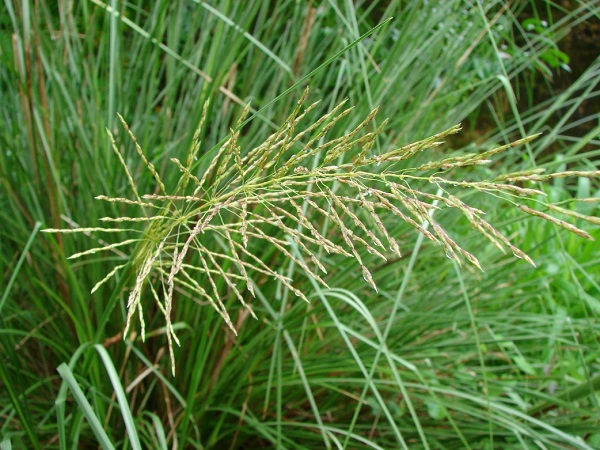| Agro technology/Cultivation practices |
Planting-stock production:
Vetiver can be propagated either by seeds or slips, but slips are commonly used.
Seed propagation: The cultivated accessions which are propagated through vegetative means show limited variation, whereas, seed propagation is used for breeding new varieties. Freshly collected spikelet show dormancy and require an after-ripening period of about 3 months. Removal of caryopsis from enclosed husk facilitates germination. Dormancy can also be broken by treating the seeds with gibberlic acid or potassium nitrate.
Vegetative propagation: by Slips
Divide the mother clumps of 15- 20cm shoot into number of slips. While planting slips trimmed off fibrous roots and leaves.
Field planting: The most suitable time for planting vetiver is June – August with the onset of monsoon vertically about 10 cm deep at a spacing of 60×30 cm / 60 × 45 cm / 60 × 60 cm based on soil fertility status, climate, and variety and irrigation facility. Planting density varies between 27,800 to 1, 10,000 plants/ha. If irrigation facilities are available, it is better to plant during March-April, and followed by irrigation. Late planting resulted in the production of coarse roots which yield inferior quality oil.
Manuring/Fertilization: Normally, fertilizer application for vetiver is not practiced in fertile soils. Farm yard manure will be beneficial for growth
Irrigation: In the absence of rainfall, soil moisture status should be maintained by irrigation from planting to establishment. However, in dry areas about 8-10 irrigations will be required to get the optimum yield. Apply mulch to conserve soil moisture. Irrigation should be discontinued 7-10 days before harvesting.
Pests and diseases:
•Vetiver is a pest hardy crop. However, in dry areas termites damage the crop. Grubs of beetle Phyllophaga errata, stem borer, Chilo sp. and scale insects and nematode infestation caused by Heterodera zeae are also a threat in some places to the commercially grown vetiver. These can be controlled by broadcasting neem cake @ 5 t/ha, neem oil 5%.
•During rainy season the plant is infested by Fusarium sp. Leaf blight caused by Curvularia trifolii is another important disease during rainy season. The infested leaves bear tan to dark spots which turn black with age. The roots of affected plants become yellow and gradually dry out. These pathogens can be controlled by 2-3 spraying or drenching of copper oxy chloride 0.3%.
|

